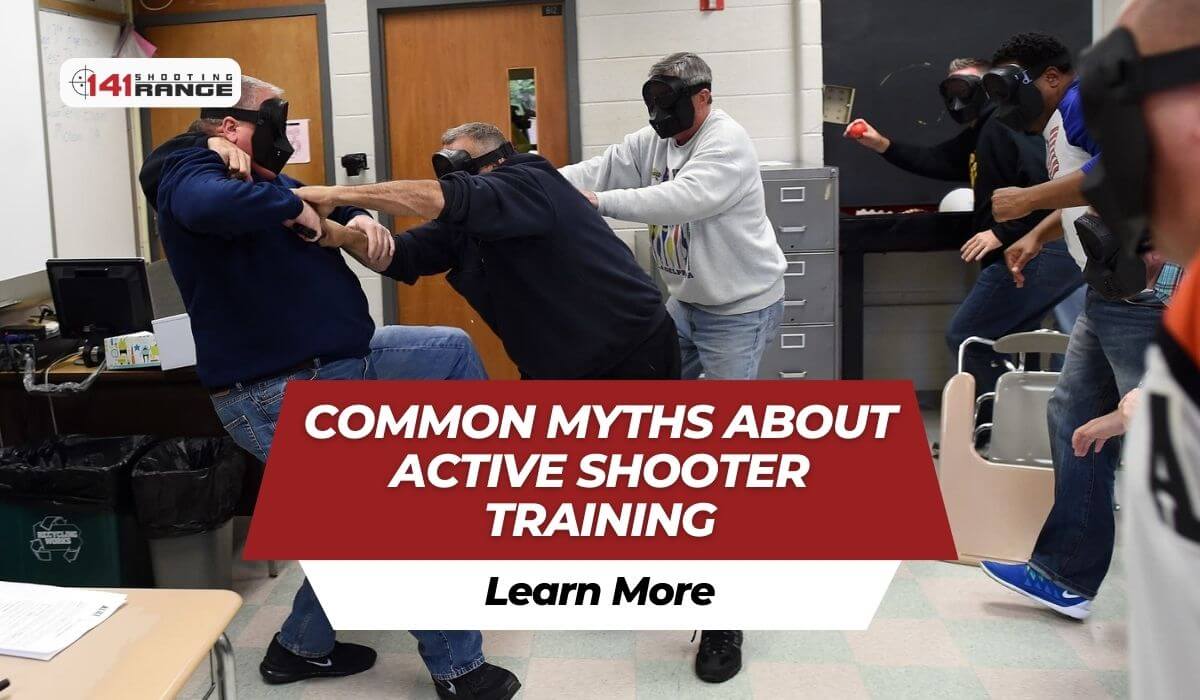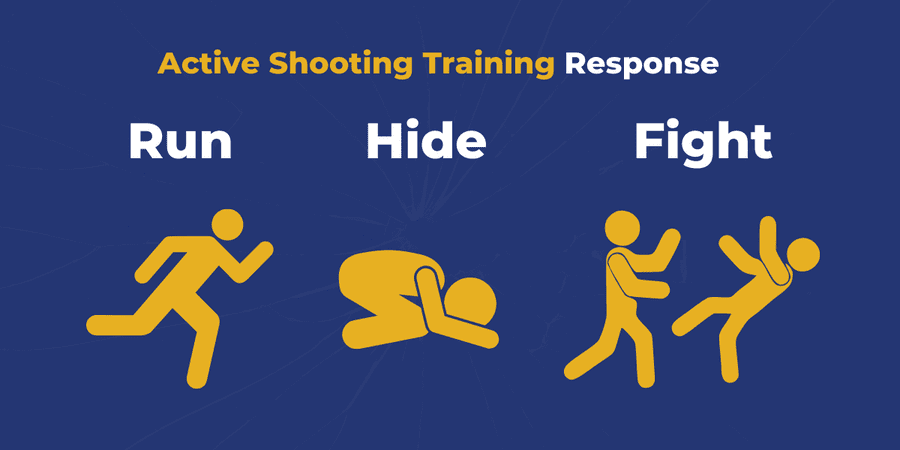Why Active Shooter Training Is Important for Work Environment Security
Why Active Shooter Training Is Important for Work Environment Security
Blog Article
Implementing Energetic Shooter Training: Ideal Practices for Developing a Safe and Prepared Community Atmosphere
As neighborhoods challenge the disturbing fact of active shooter occurrences, the execution of thorough training programs comes to be necessary. What are the crucial aspects that can change a conventional training program into a robust version for community durability?

Understanding the Demand for Training
In a period marked by boosting cases of physical violence in public rooms, comprehending the requirement for active shooter training has actually never been more vital. Thorough training efforts can gear up participants with the expertise and abilities to respond emphatically.
Additionally, the emotional impact of violence on people and communities can not be overstated. Training fosters a sense of empowerment and preparedness, allowing people to really feel more protected in their environments. It additionally promotes a culture of safety and security, where recognition and caution become essential elements of day-to-day live. The benefits of energetic shooter training expand past immediate feedback; they include enhancing interaction protocols and boosting overall security steps within companies.
Secret Parts of Effective Programs
Reliable active shooter training programs integrate a number of crucial elements that enhance readiness and response capacities. Detailed educational program development is important, ensuring that training web content is pertinent, evidence-based, and customized to the specific requirements of the organization or neighborhood. This includes understanding the dynamics of active shooter incidents and the emotional influence on individuals involved.
2nd, practical training circumstances should be utilized to simulate prospective scenarios, permitting participants to practice decision-making and reaction techniques in a regulated atmosphere. These drills promote muscular tissue memory and construct confidence among participants.
Third, a focus on interaction methods is crucial. Establishing clear lines of interaction among regulation enforcement, emergency -responders, and individuals ensures coordinated responses during an occurrence. Routine updates and refresher programs aid keep communication pathways clear and effective.
Fourth, ongoing analysis and responses mechanisms must be incorporated right into the training program - active shooter training. Evaluating the efficiency of training with participant feedback and performance metrics permits constant improvement
Lastly, promoting a culture of security and preparedness within the neighborhood motivates watchfulness and proactive procedures, ensuring that people are not just trained but additionally taken part in keeping a safe and secure atmosphere.
Engaging Neighborhood Stakeholders

To properly involve these stakeholders, it is important to communicate the purposes and benefits of the training. Hosting informative sessions can help clarify the training's purpose, address issues, and describe the roles each stakeholder may play. Producing a stakeholder advisory committee can promote continuous discussion, permitting for diverse point of views and understandings to be integrated right into the training program.
Building partnerships with neighborhood leaders and organizations is additionally critical. Their assistance can enhance outreach efforts, increase involvement, and guarantee that training is tailored to the one-of-a-kind requirements of the community. In addition, stakeholders can assist in distributing information and resources, reinforcing the message of safety and readiness.
Ultimately, involving area stakeholders not only strengthens the training initiative yet additionally grows a sense of possession amongst residents, leading to a much more resilient and enlightened community qualified of reacting successfully to prospective dangers.
Educating Delivery Approaches
Utilizing a range of training shipment techniques is vital to fit the diverse understanding styles and requirements of participants in energetic shooter training programs (active shooter training). Effective training can take several kinds, consisting of talks, hands-on simulations, on the internet components, and interactive workshops. Each approach offers a distinct purpose and can boost the overall discovering experience

On the internet components offer versatility and ease of access, enabling individuals to discover at their own speed. These can include videos, quizzes, and conversations to assess understanding. Interactive workshops urge team conversations and problem-solving, advertising teamwork and interaction abilities.
Integrating a combined approach that integrates these methods not only enhances the training experience however additionally makes sure that individuals are much better prepared to react effectively in the occasion of an energetic shooter scenario (active shooter training). By dealing with various learning preferences, companies can produce a more educated and receptive area
Continuous Assessment and Enhancement
Regular evaluation and improvement of energetic shooter training programs are crucial to maintaining their relevance and efficiency. As threats develop, so have to the methods and methodologies employed in training. Continual assessment ensures that training content shows the most recent knowledge on active shooter events, integrating lessons gained from current occasions and adjusting for emerging fads.
To facilitate this procedure, organizations should establish feedback systems that consist of individual examinations, professional testimonials, and case debriefs. Gathering information on individual performance throughout drills and workouts is essential, as it highlights locations requiring enhancement and notifies future training sessions. In addition, engaging with police and emergency situation responders can provide useful insights into the functionality and applicability of training procedures.
Regularly scheduled reviews of training materials and techniques should be mandated, cultivating an atmosphere of development and flexibility. Organizations needs to additionally urge a society of ongoing discovering, where employee feel equipped to suggest changes based on their experiences. By committing to constant evaluation and improvement, companies not only boost the performance of their active shooter training programs yet likewise enhance their total dedication to safety and security and preparedness within the community.
Final Thought
In final thought, reliable implementation of active go to my blog shooter training necessitates a thorough technique that prioritizes community involvement and realistic simulations. By developing tailored educational programs, integrating varied training methods, and promoting partnership amongst stakeholders, communities can enhance preparedness. Continual evaluation and responses devices are important for adjusting programs to check out this site emerging hazards, therefore reinforcing general security. Eventually, a commitment to continuous training and enhancement cultivates a culture of watchfulness and preparedness, guaranteeing a much safer atmosphere for all community participants.
Report this page